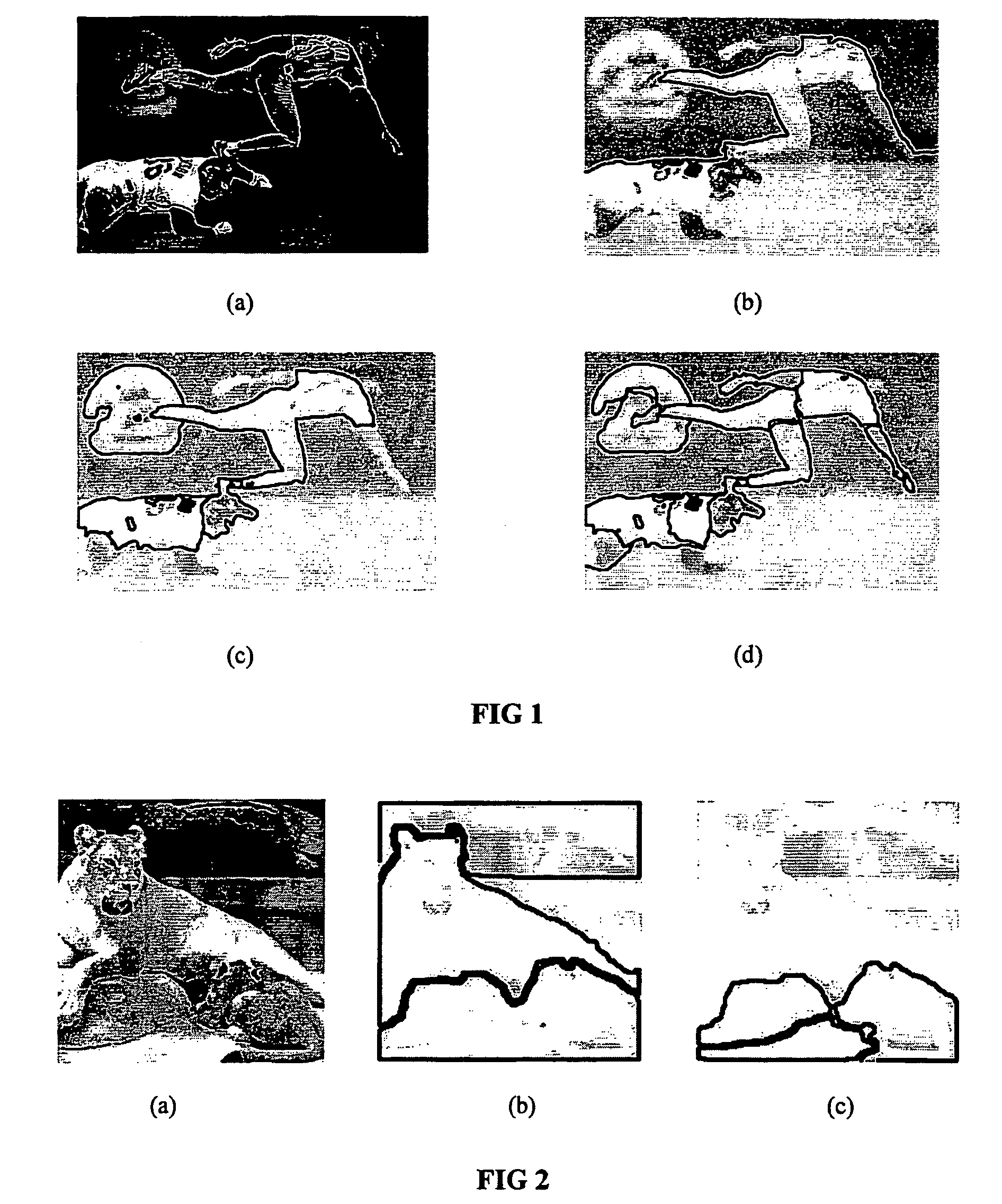Method and apparatus for data clustering including segmentation and boundary detection
a data clustering and data technology, applied in the field of data clustering methods and apparatuses, can solve the problems of affecting the prior known methods of constructing irregular pyramids, affecting the extraction of irregular structure regions, and involving a slow iterative process
- Summary
- Abstract
- Description
- Claims
- Application Information
AI Technical Summary
Benefits of technology
Problems solved by technology
Method used
Image
Examples
Embodiment Construction
[0028] The inventive method and apparatus will now be described in detail with respect to specific embodiments. In the first embodiment, given an image .OMEGA. that contains N=n.sup.2 pixels, a graph is constructed in which each node represents a pixel and every two nodes representing neighboring pixels are connected by an arc. In the implementation of the method each node is connected to the four neighbors of the respective pixel, producing a planar graph. It should be noted, however, that the inventive method can be applied also to non-planar graphs. In fact, the graphs obtained following the coarsening steps to be described hereinafter are non-planar. In the discussion below, a pixel is denoted by an index i.epsilon.{1, 2, . . . N} and its intensity by g.sub.i. To every arc connecting two neighboring pixels i and j, a positive coupling value a.sub.ij is assigned reflecting the degree to which they tend to belong to the same segment. For example, a.sub.ij could be a decreasing fun...
PUM
 Login to View More
Login to View More Abstract
Description
Claims
Application Information
 Login to View More
Login to View More - R&D
- Intellectual Property
- Life Sciences
- Materials
- Tech Scout
- Unparalleled Data Quality
- Higher Quality Content
- 60% Fewer Hallucinations
Browse by: Latest US Patents, China's latest patents, Technical Efficacy Thesaurus, Application Domain, Technology Topic, Popular Technical Reports.
© 2025 PatSnap. All rights reserved.Legal|Privacy policy|Modern Slavery Act Transparency Statement|Sitemap|About US| Contact US: help@patsnap.com



